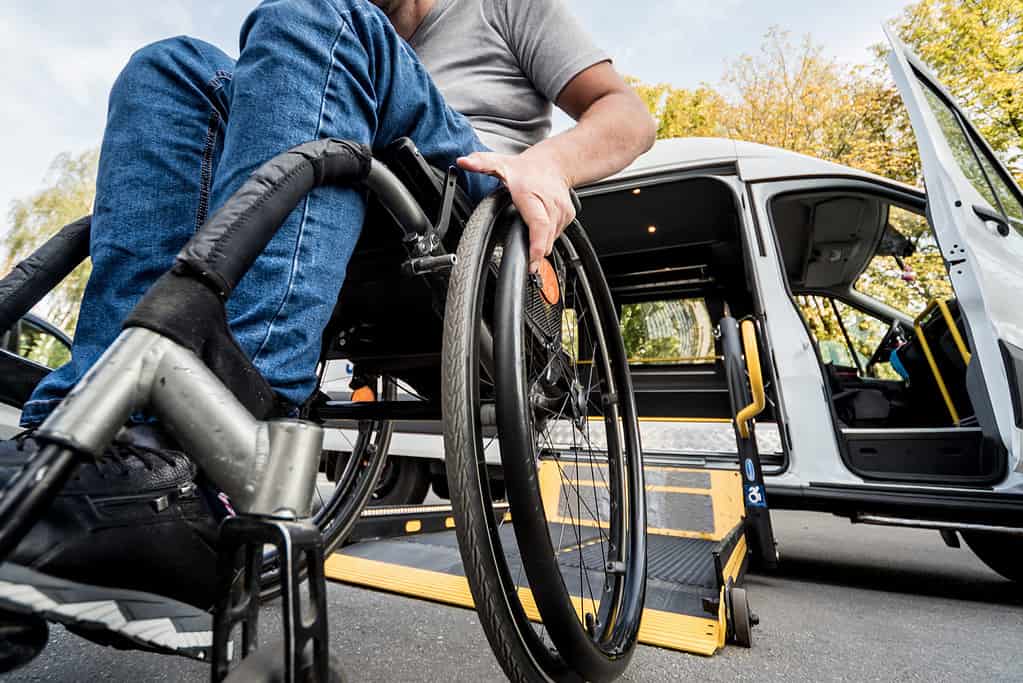Vehicle Modification
Vehicle modifications like wheelchair ramps and lifts can make a van or other car more accessible.

Vehicle that have been modified with ramps or lifts can be much more accessible for people using mobility devices and wheelchairs. Although existing vehicles can often be retrofitted with these modifications, it’s much easier and faster to find a new or used vehicle that has already been modified.
Purchasing an accessible vehicle is a very important and often complicated process. For many families, this is an emotional milestone, a visible sign that a family member has a moderate to severe, long term disability. Self-propelling a manual wheelchair for any length of time is extremely tiring and requires an incredible amount of upper body strength and endurance, so most wheelchair users who have MitochondrialRelated to the mitochondria. disease require a power chair or scooter, if independent mobility is the goal. Power wheelchairs for adults can weigh up to 300 lbs even while unoccupied, so transportation in a standard vehicle is usually out of the question. Accessible transportation is crucial for a wheelchair-user’s independence, safety, and quality of life.
Things to consider when exploring vehicle modification
There are many factors involved when choosing to add vehicle modifications to an existing vehicle or purchase an already adapted vehicle. Before visiting dealers or searching online for used vehicles, several questions should be considered:
- Who uses a wheelchair in the family? Are there more than one family members using wheelchairs? Will the user remain in the wheelchair while traveling? How many other passengers will be using the vehicle on a regular basis?
- Try to imagine not only your family’s current needs, but also potential changes over at least the next 10 years. Is it possible for the wheelchair user to someday obtain a driver’s license? Does the user need to be able to enter the vehicle and secure the wheelchair without assistance?
- What are your family member’s travel needs; is the vehicle necessary for transportation to and from work or school? How frequently does your family travel for medical appointments, and how far from home are you traveling? Is public transportation available and appropriate for your family?
- Can your family afford to purchase a new accessible vehicle with a traditional vehicle loan? Are you considering used vehicles as well? Will you need financial assistance in the form of grants and/or loans specifically for individuals with disabilities?
Once you have a rough idea about your transportation needs, it is time to begin researching your vehicle modification options. The National Highway Traffic Safety Administration offers an overview of accessible vehicle options, and addresses the factors listed above. You can find this information here.
Mobility Works is a company that sells, rents, and leases accessible vehicles, but it provides lots of general information about conversion possibilities, including diagrams of seating options.
The Mobility Resource has provided a comprehensive list of rebate programs offered by vehicle manufacturers.
Is vehicle modification necessary for transportation to work or school? Every state has a program for vocational training and accommodationsChanges that remove the barriers to learning. They can also change how and what the children is expected to learn and know. for individuals with disabilities. Although these programs cannot pay for the vehicle itself, they can pay for all modifications and driver training if these are written as goals for vocational planning.










